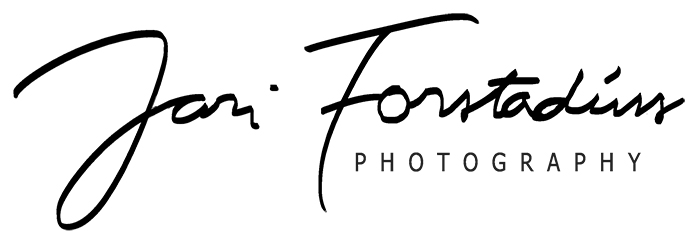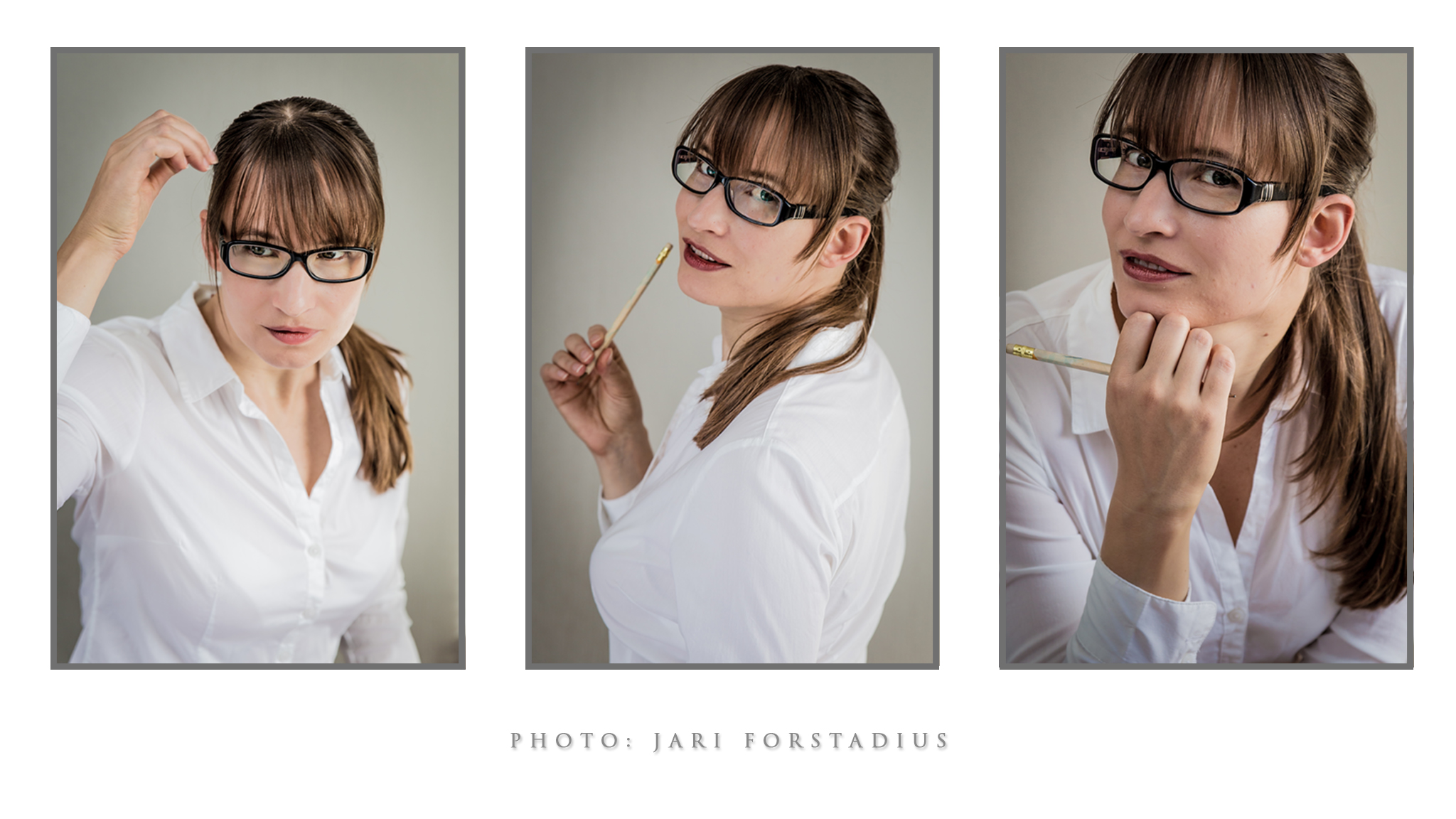In this text I talk about how I do the portrait shoots when at home without proper studio. I recently faced a situation where I was asked to take a profile photo of a professional with short notice. Here is my workflow. It is basically by the book, i.e. I follow the basic guidelines with no secrets or magic here, or maybe just a little with post processing.
1. Light
First and last thing everyone talks when teaching photography is lighting. It is so important that some photographers even first look to find a great light and after that they start looking something to take photo at. In order to take a great photo, you need great light. So, at home you need to look for the best light available, and that will be the big window on the sunny side. If you live in Finland and it is period of polar night approaching, you need to use that window when the sun is up that brief moment, if any. There are lot’s of setups how to use light, but in a standard setup you set your subject sideways by the window so that the window is mostly on the front side of the face. You may want to achieve the “Rembrandt triangle” on the shadow side of the face. If window light is too harsh, you may move your subject further away or use some diffusor on the window. This time I had white almost transparent curtains covering the window to soften the light.
The window light may be enough, but if you are not looking for too dramatic shadows, you can improve the quality by filling the shadow side with some light. This can be achieved in multiple ways. Some reflector can be used. If you do not have a proper photography reflector you can use any white surface; cardboard, white sheet or anything. In the example photos I used a reflector with silver coating. Silver coating seemed to match the light coming through the white curtains better than reflector with gold or half gold. I set the reflector right next to subject as close as possible to reflect the light from the window to the shadowy side. You need to have the reflector in front of the subject and not totally on the side or otherwise you will lighten the ear and the back of the head. We did not have any assistant available so I set the reflector leaning against a chair that was standing on the bed.
If you have off-camera flash available with some diffusor or softbox you can of course use that to fill the shadow side. But be subtle not to flatten the image too much. You can also use on-camera flash if you are able to turn it backwards or sideways to reflect via the walls. But this depends a lot on the room and you need to be careful not to create extra shadows.
2. Background
Good photographer always checks the background first before concentrating on the actual subject of the photo. To get good portraits at home you need to find good background, which usually is a plain wall without anything on it. The tricky thing is that you need that background to be near to the best light. I have two good windows for indoor portraits at home and to utilize the other one, I need to remove one painting from the wall. Background is an important thing that makes professional photographers differ from beginners. For each and every photo, you need to check the background and get as little distraction there as possible. Color of the background matters also, but that is a discussion of its own.
3. The tricky part: right pose and facial expression.
It depends a lot on the person how easy it is to get a good facial expression. For some people it is just “smile” and “click” and that’s it, but for most of the people you only get that awkward Chandler-smile (check from Google or YouTube). If you are not working with a professional model that can make a good face with minimal guidance, this will be the tricky part. What kind of expression you want depends also of course on your goal and your subject. For a company executive photo, you need get that trustworthy smile, for heavy metal guitarist you may want to get that murderous look. Teenage girl may want that (in?)famous duckface look.
I usually start with getting the pose right. For normal portraits you want to turn the shoulder line a little bit diagonal towards the camera. Then you need to get them sit straight and bear their head up. If you take the photo lower than their eyes they look more majestic and more authoritarian. If you take the photo little higher than eye level you get their eyes look bigger and there is bigger change to diminish the possible double chin. This is also the right position if you are taking that duckface photo. If you get your subject to lean little bit forward you can get more attentive and personal looking photo. Leaning forward also diminishes possible double chin.
When I get the pose right I take couple of photos without asking for any facial expression. This is also the time to check that your camera settings are right and that you get the correct exposure. Then I ask the subject to smile and I take a couple of photos regardless how awkward the smile is. Do not tell them! At this point praise how good photos you are getting. At this point they usually get more relaxed and confident as they think that you already have the photo. Do not tell them if you do not have the perfect one yet. Then I usually use little trick: I ask them to do something crazy. Stick tongue out, roll their eyes or anything crazy. If you get smile as a reaction to your suggestion, capture that! If you get that crazy look, capture it. (That may be priceless.) And be ready to take a photo right after the crazy face when they usually do that natural relaxed smile. That is the one I am aiming for. The crazy face exercise is just a distraction to get them relaxed and to trigger the smile. There are of course other strategies to get the right expression, like the one the famous Cartier-Bresson is said to have: just wait until there is the right expression.
It is also a good advice to take photos when the subject is actually not posing for a photo. Like the leftmost example in the beginning of this text.
4. Post-processing – where the magic happens
What non-photographers may not realize is that nowadays almost every photo published by professionals are processed with a computer. There are zillions of great photos on Internet and people are so used to see processed photos, that if you want to make your photo pop-out, you need to get the final edge via post processing it with computer. Post processing is were you update a good photo to a great photo. Nowadays the skills on post processing is one essential thing that makes the difference between just ok photographers and the great ones. The amount of processing depends on your goal. For beauty magazines and advertisements the amount of processing seems to be nowadays unnatural. For normal portrait photo without any artistic effect you want to do only some subtle adjustments so that the person in a photo does not even realize what kind of tricks you have done with the computer. There are lot’s of tutorials on processing portraits. Sharpen and brighten the eyes, smoothen the skin a little, adjust color vibrance, lighten the shadows if needed, get more clarity to the hair if needed, check the lip color, whiten the teeth if needed (but just little if you are not doing a Pepsodent ad). If the photo is going to Internet, nowadays the trend seems to be go towards more high key type of photo, i.e. you may want to brighten the highlights and shadows quite a lot compared to a normal natural looking documentary photo. You may also want to add some vignetting to the background. You also need to crop the photo. This is actually one of the most important things in post processing. You want to have the position of the subject within the frame to be perfect and that is done by cropping. I usually take the original photo too wide framed to have more room for post processing decisions about the final crop. There is an advice around that if you want to improve your photos, go closer. That applies to post processing also; It usually helps to crop tighter. If I have the feeling that there is something wrong in the photo, or something is missing, is usually try to crop tighter. Nowadays it is completely ok to cut off the top of the head. That gets more intimate feeling on the photo, just like leaning forward. See the rightmost example photo.
Below is the final photo, which was taken according to the original request. The three photo series on the beginning of the blog text is my own vision, which we took right after the photo below was taken.
P.S.
What?! An engineer writing about photography and nothing written about camera settings? Ok, here you go. Use as low ISO as possible. If you want to have whole head sharp, use something like F11 and adjust shutter time accordingly. If you are shooting without tripod you do not want to go to longer than 1/80 or 1/6o. I usually do the portraits without tripod to be able to adjust the position and angle quickly. If you do not have enough light or if you want to get more focus on eyes, and blur ears little, go to lower F value. You can even go to 2.8 or lower if you lense allows. I usually set ISO to 100 and start with aperture priority mode with F8-2.8 depending on the light and the effect I want. If I want to have more control and do more adjustments then I switch to manual mode. How about focal length then? That is really a topic of its own. Some people prefer 200mm. I currently usually use 70mm as that is max of my all around lense. Sometimes 80mm is preferred as portrait lense. If you check portraits on Peoples magazine or similar you may be surprised to see that there is more and more portraits taken with wide angle, something like 24mm. So, to be on safe, side use anything between 70-200mm for normal portraits. For beauty photos go towards 200mm. If you want to get more character out, go towards wider angle.



After reading this post, you can tell you’re a professional writer with lots of experience.